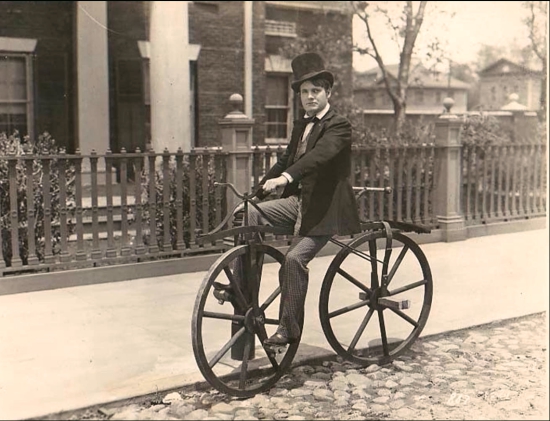Welcome to the third installment in the series “Appalachians in Moving Pictures,” a post about silent film actors born in Appalachia. The first and second parts focused only on actresses, while the third and fourth sections are designated for actors. You’ll notice Part III and Part IV are a little different. As I’ve told Appalachia Bare’s Associate Editor, Edward Francisco: I’ve been dog-paddling through a sea of actors (over sixty). The actors about whom I found the most information are showcased in the body of each post. The actors with small bits of information are listed as honorable mentions in the final post. Some of these names might surprise you!
Alfred Allen
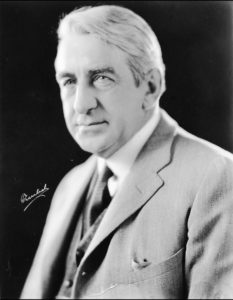
Alfred Allen was born in Alfred, New York on April 8, 1866. He was highly intellectual, being “educated at Harvard, Johns Hopkins, Columbia University, the American Academy of Dramatic Arts, the New England Conservatory of Music,” and Alfred University (where he became a professor). He had a commanding presence, standing six feet and weighing two-hundred pounds. His first film role was in The Bride of the Nancy Lee (1915) and he enjoyed a long career in motion pictures, from 1917 to 1935, the bulk of them silent films.
In addition to being a silent film actor, he was a geologist, a playwright, and an author. One of his plays is listed in Herringshaw’s Encyclopedia of American Biography of the Nineteenth Century (Thomas William Herringshaw, 1901) as Jack the Giant Killer. He also authored several books, one of which is The Heart of Don Vega . . .
Alfred Allen died in Los Angeles, California on June 18, 1947.
![]()
![]()
Johnny Arthur
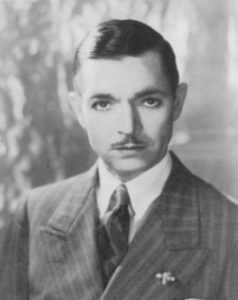
Johnny Arthur was born John Lennox Arthur Williams in Scottdale, Pennsylvania on May 20, 1883.
He began performing when he was a teenager and worked in vaudeville for twenty-five years before he became a film actor in 1923. He often played “swishy, effeminate types, often fussy clerks, but also hen-pecked husbands and even (in the Pre-Code era), implied homosexuals.” He starred in several shorts directed by Roscoe Arbuckle (aka “Fatty” Arbuckle). He also played Spanky’s father and sometimes Darla’s father in the Our Gang series.
He died December 31, 1951 in Los Angeles, California of heart disease. When he died, he was indigent and was buried in a pauper’s unmarked grave. In 2012, due to a rediscovery of Arthur and his work, his admirers gifted him a headstone.
![]()
![]()
Hobart Bosworth
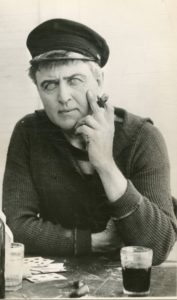
Hobart Van Zandt Bosworth was born in Marietta, Ohio on August 11, 1867. Bosworth’s stepmother was extremely abusive, so he ran away and became “a cabin boy on the clipper ship, ‘Sovereign of the Seas.'” He originally wanted to be a painter. To help fund his artwork, he worked as a stage manager in San Francisco. Sometime after, he took a small acting part. His theatre career began then, at age eighteen. He subsequently joined a Shakespearean road company and was fairly successful.
He was a boxer and wrestler at one time, and he “learned horsemanship” while once working as a ranch hand. He left California and made his way to Park City, Utah, where he worked as a miner. He quit the mines to work for magician Hermann the Great as an assistant on a tour in Mexico. Bosworth then made his way to New York and performed with Augustin Daly‘s theatre for ten years.
Unfortunately, he contracted tuberculosis and had to retire from stage acting. He eventually recovered but had to take extra precautions (such as resting for long periods of time) to manage the illness. The disease caused him to lose his voice; yet, although it was an extreme detriment for a stage actor, the loss wasn’t an issue in silent film. He signed his first motion picture contract with Selig Polyscope.
He was nicknamed the “Dean of Hollywood,” because he became the “star of the first movie made on the West Coast.” He formed his own production company called, Hobart Bosworth Productions Co. The company merged (as did several smaller production companies of the time) with Paramount in 1916.
Despite his voice issue, he did make a few sound films as a solid, mostly “B” actor. In his career, he acted in over 250 movies (other sources say over 300). He also wrote many scenes and directed films as well.
He was married twice. His first wife was Adele Farrington but they divorced after the birth of their son, George. His second wife was Mrs. Cecile Kibre Percival and they remained married until his death. Hobart Bosworth died of pneumonia on December 30, 1943.
![]()
![]()
William Boyd
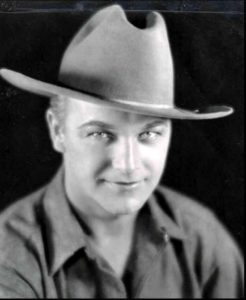

William Lawrence Boyd was born in Hendrysburg, Ohio on June 5, 1895. His parents died when he was a teenager (the father, Charles, died on the job), so he had to quit school and work. He worked “as a grocery clerk, surveyor and oil field worker.” He and his brother, Clarence, had a job delivering groceries from a horse-drawn wagon. Such a hard life caused his hair to gray prematurely.
He was an extra on Cecil B. DeMille’s 1919 movie Why Change Your Wife?, which was his first acting role. Boyd was a pretty smart self-promoter, really. After his experience as an extra, he donned a dapper outfit and DeMille noticed him. Boyd soon had the leading role in the romantic movie The Volga Boatman and quickly rose to “matinee idol.”
When talking pictures replaced silent film, Boyd’s career slumped and he was almost broke. Another unfortunate event added to this downward spiral. He was mistakenly identified as another William Boyd (William “Stage” Boyd), who was arrested for “gambling, liquor, and moral charges.”
In 1935, Boyd was offered the lead role of “Hoppy” in Hop-a-long Cassidy. Boyd made sure Hoppy had an outstanding moral character – no smoking, drinking, tobacco chewing, swearing, no crude behavior toward women, etc. This move improved his public image exponentially. He starred in almost seventy “Hoppy” episodes.
Boyd proved once again, he was a smart businessman. He “bought the rights to all his pictures” in 1948. He also bought the rights to the name “Hopalong Cassidy” and “marketed all sorts of ‘Hoppy’ products (lunch boxes, toy guns, cowboy hats, etc.) and received royalties from comic books, radio and records.” When television appeared in homes, Boyd made a “significant financial windfall” from royalties when NBC broadcast “Hoppy Night” on Sunday evenings. He promoted himself quite well, performing in circuses, rodeos, and radio. He made personal appearances in several venues and visited sick folks in hospitals. He even had his own ‘Hoppyland‘ theme park.
Doctors discovered a tumor in one of his lymph glands and, after he had surgery to remove it in 1968, he stopped doing interviews and refused to be photographed.
He was married five times to: Laura M. Maynes, Ruth Miller, Elinor Fair, Dorothy Sebastian, Grace Bradley (until his death).
He had only one child with his second wife, Ruth, named William Wallace Boyd, but the child died at less than a year old of “pertussis (whooping cough) and acute colitis.” He loved children and “donated a portion of his fortune to children’s hospitals and homes.” He created a special club for children called “Hoppy’s Troopers.”
William Lawrence “Hoppy” Boyd died September 12, 1972 in Laguna Beach, California of Parkinson’s disease and heart failure.
![]()
![]()
Raymond Cannon
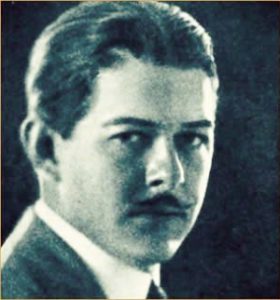
Raymond Cannon was born Ulises Tildman Cannon in Long Hollow, Tennessee on September 1, 1892. He was the youngest son of Newton Cannon – farmer and Baptist preacher – and Sarah Lincoln Bolinger. He was both an actor and writer.
He attended a Baptist divinity school but moved west after he was expelled. Afterward, he performed in various vaudeville circuits. He also worked “as a reporter in Dallas and Fort Worth” for a time. He told his biographer, Gene Kira, that he “spent ten days in a Chihuahua jail for being a correspondent during the Mexican Revolution.”
In the 1910s, he made his way to California and was a cast member in the first serial cliffhanger, The Adventures of Kathlyn (1913). He acted in several Lillian Gish films, like True Heart Susie (1919).
At one point, he was the business manager for the popular magazine, Camera! The Digest of the Motion Picture Industry. He bought the magazine in 1919, then later sold it.
In 1924, Cannon left acting and pursued a writing career. He wrote screenplays, mostly comedies, like The Carnival Girl, starring Marion Mack, which was written right before she starred in The General with Buster Keaton. Keaton liked what he saw in Cannon’s work and hired him as a film collaborator. Cannon walked away about year later for reasons unknown.
He labeled himself a Socialist. He was interested in Chinese and Eastern philosophy and formed a “Chinese culture club.” He was also “the public relations director for China City, a new Chinatown in Los Angeles.”
After his career in acting, he became an accomplished sport-fisherman. He wrote about his experiences in How to Fish the Pacific Coast (1953) and The Sea of Cortez (1965), the latter of which “became an instant and highly acclaimed best seller.” Another book, The Unforgettable Sea of Cortez: Baja California’s Golden Age 1947-1977 – The Life And Writings Of Ray Cannon (2008, Gene Kira) is dedicated to his life and writings, telling “the magical and colorful story of Ray Cannon, the pied piper of Baja California’s Golden Age.”
He married Fanchon Royer and they had three children. They later divorced. He maintained a “longtime relationship” with Carla Laemmle but they never married.
Raymond Cannon died June 7, 1977 in Hollywood, California of lung cancer. He was cremated and “his ashes were scattered in the Sea of Cortez.”
![]()
![]()
Lawrence Chenault
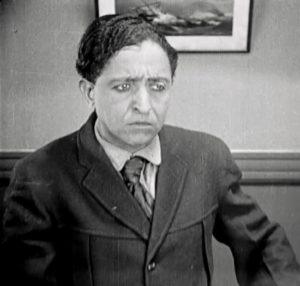
Lawrence Chenault was born in Mt. Sterling, Kentucky on November 23, 1877. He spent most of his childhood in Cincinnati, Ohio.
He had a very talented singing voice, which he perfected at Allen Temple Church.
He began his stage career in Chicago at the Pekin Theater and continued with various companies like the Black Patti Troubadours and the M. B. Curtis Minstrels. He toured the world – the United States, Australia, New Zealand, etc. Chenault’s talents led him to become a “professional stage and screen actor in Chicago, New York,” etc. He mostly performed, at least in his early years of acting, in New York for African American stage and film.
His film debut was Oscar Micheaux‘s 1920 movie, The Brute, where he played Herbert Lanyon. He went on to play in several other Micheaux race films, like Symbol of the Unconquered (1921) and Body and Soul (1925). Another movie, Ten Nights in a Bar Room (1926) “enjoyed the longest continuous run of any race film of the silent era.”
His singing and acting expertise, along with his involvement in motion pictures, made him “a leading figure of the Harlem Renaissance.” Indeed, Chenault was so talented and popular he “played more leading roles than any other performer in black pictures during the silent film era.” He was known as the “dean of black film actors.”
Lawrence Chenault died of pneumonia on December 27, 1943 in Indianapolis, Indiana. He was listed in at least one census as living with his mother in Indiana.
![]()
![]()
Winston and Weston Doty
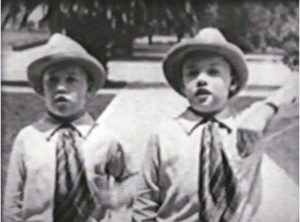
Winston and Weston Doty were identical twin child actors. They were both born on February 18, 1913 in Malta, Ohio to Clarence “Jack” Doty, a radio actor, and Olive Nance Naylor. The parents divorced and their mother introduced the twins to motion pictures and radio. The twins were one of the first “Our Gang” stars, appearing in: Our Gang (1922), Fire Fighters (1922), One Terrible Day (1922), A Pleasant Journey (1923) – Winston only, and Lodge Night (1923) – Winston only. In their last film appearance, they starred as two of the Lost Boys in Peter Pan (1924).
The brothers lived together their entire lives. They both attended the University of Southern California. However, they were financially strapped and left school to earn money so they could return and continue their education.
On December 31, 1933, the Doty brothers attended a party hosted by Henry Hesse in Montrose, California, during the heaviest rainfall recorded up to that date in the state. The twins called their mother at midnight and wished her a happy new year. Just after the 1934 New Year’s celebration, water was heard rushing around the house. A “flood originating in drain off from the San Gabriel Mountains rushed into Los Angeles” with walls of water reaching twenty-feet high. The twins both drowned, along with about forty others and at least seventy-five missing. Searchers found the brothers’ bodies on New Year’s Day “lying close together in the debris.”
The brothers were cremated and their remains were buried together in a shared grave. Woody Guthrie sang about the flood in “The Montrose Flood.”
** The link to Allen Ellenberger’s site, Hollywoodland may be down. My apologies.
![]()
![]()
Clark Gable
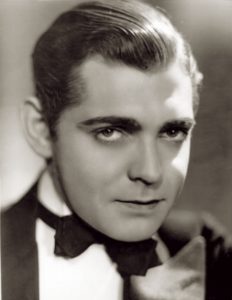
![]()
Clark Gable was born William Clark Gable on February 1, 1901 in Cadiz, Ohio. His mother died when he was seven months old. His father had him stay with his maternal aunt until he was able to care for him. Gable’s stepmother, Jennie Dunlap, was very kind and doted on him. She taught him piano, guided him in aspects of chivalry, and educated him about fashion and how to dress sharp. He once said of her, “She was a wonderful woman.” Clark quit high school when he was sixteen years old and subsequently worked in a tire factory – the Miller Rubber Company – in Akron, Ohio. While he worked at the tire factory, he volunteered to work backstage at a theatre and this move gave him the desire for an acting career.
Jennie Dunlap passed away and his father sold their farm and moved to Tulsa, Oklahoma to work on an oilfield. He wrote to his son and lured him to the oilfield with a false story about a drama group interested in him. Once Clark arrived, he found his father had squandered all the money from the sale of their Ohio farm and lied about the drama group. Clark became the “odd-job man” at the oilfield, and, as soon as he turned twenty-one, Clark decided enough was enough. When his father found out that Clark was serious about an acting career and was determined to move, he belittled his son and called him a “sissy” – so often that Clark fought back and his father “ended up flat on his back.” Father and son wouldn’t see each other until ten years later.
Gable and Lionel Barrymore became good friends. Barrymore managed to negotiate a test screening for Gable with Darryl Zanuck. Zanuck was unimpressed, saying Gable was a “big ‘ape’ with . . . ‘huge floppy taxi-cab ears.'”. Indeed, Gable’s ears were legendary, causing him to lose quite a few initial roles. He was persistent, however, and, when he did obtain roles, he often played commanding characters with bravado or “virile, lovable rogue” characters with a “gruff facade” that masked a natural, mischievous allure. In his first silent film, he had an uncredited role in Fighting Blood (1923). He played in eleven more silent films and transitioned (as we all well know) beautifully into talking films.
He won one Oscar throughout his long career and the story behind that is pretty satisfying (especially with the understanding that movie stars under contract had no say in what role they could or couldn’t accept). In the 1930s, Gable was under contract with MGM. In a 1956 Saturday Evening Post interview, he said of that time:
MGM assigned me to a bad part in Dancing Lady, with Joan Crawford — a picture I didn’t like. But as bad as the part was, it wasn’t as bad as my health . . . I’d lost a lot of weight. They’d been working me hard, and I was tired. I told myself, ‘If I have a few operations, that will take care of my health and the part in Dancing Lady too.’ I had my appendix and my tonsils out, but it didn’t take care of everything, for MGM was mad at me. For some strange reason they thought I’d taken evasive action to avoid their picture. They bided their time during the eight or nine weeks I was in the hospital. Then the very day after I got out they called me in and said, ‘We’re sending you over to Columbia Pictures on a loan-out.’
Columbia at the time was considered slightly above “Poverty Row-esque.” The movie Columbia had in mind for Gable was It Happened One Night (1934), and, ironically, his performance earned him that Academy Award. Needless to say, Gable was never “loaned out” again. Indeed, his career catapulted. He was deemed “The King of Hollywood,” or, simply, “The King.”
Gable was a notorious womanizer with five marriages under his belt: Josephine Dillon, Maria Franklin Gable, Carole Lombard, Sylvia Ashley, and Kay Williams (until his death).
Of all his wives, he loved Carole Lombard most. This statement isn’t hyperbole. When he died, his fifth wife, Kay, buried Gable next to Lombard. He met Carole in 1925 where they were cast as extras on Ben Hur: A Tale of Christ. They were reacquainted at a formal Hollywood party and fell in love. They didn’t become romantically involved until 1936, when they lived together until Maria Franklin Gable granted Clark a divorce. He married Lombard in 1939. In January 1942, she was on a tour (accompanied by her mother) for the Hollywood Victory Committee to help with the war effort. She was supposed to take the train but she was so eager to get home, she flew instead. The plane crashed in Nevada on Table Rock Mountain, killing Lombard, her mother, and all others on the flight.
After Lombard’s death, Gable drank heavily. To his friends, he “was never the same man afterwards.” He”raced madly about on his motorcycle, mournfully telling his friends, ‘I am not trying to kill myself; I just don’t care if I go on living.'”
He joined the U.S. Army Air Force, wanting to “see action,” seeming to have an unconscious death wish, or, perhaps, survivor’s guilt. He trained “at Tyndall Army Air field to learn gunnery and take a combat photographic course.” He “volunteered to fly combat missions with the 351st Bomb Group at Polebrook, England. He completed twenty-four missions in a B-17.” In one incident, he was “forced to parachute out of a damaged aircraft.”
Clark Gable died on November 16, 1960 in Los Angeles, California. An Air Force Honor Guard attended his funeral. His wife, Kay, was pregnant with his son at the time. Gable’s greatest wish was to be involved in the child’s life. Sadly, that never came to pass.
Other tidbits about Clark Gable:
- Adolph Hitler was a fan. He “offered a sizable reward to anyone who could capture and return Gable” during World War II.
- According to IMDB, he was dyslexic.
- He didn’t like Gone with the Wind (1939) because he felt it was a woman’s movie (i.e., a chick flick). (IMDB)
- He and Joan Crawford had a passionate relationship for several years. They acted in eight films together.
- He and Loretta Young had a secret child together named Judy Lewis. Young “kept her pregnancy secret to protect both their careers and the scandal that would result as Gable was married at the time of the affair.” Young told her daughter in 1966 the identity of her real father.
- The San Fernando home of Gable and Lombard was called “The House of Two Gables.” (IMDB)
- He formed his own production company called GABCO.
- He was a Mason – a “member of the Beverly Hills Lodge No. 528.”
- “He was like Jack Dempsey in a tuxedo.”
![]()
![]()
Henry King
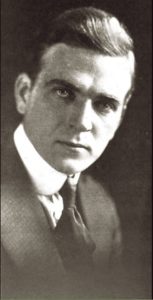
Henry Edmonson King was born in Christiansburg, Virginia on January 24, 1886. He quit school when he was fifteen and worked on the railroad. Work was hard and he soon “found more suitable employment as an apprentice actor.”
He acted in “road shows,” vaudeville, and stage before he appeared in his first film in 1913 – a short called A False Friend. His first roles were mostly western villains but he soon acquired romantic leads.
King began directing motion pictures in 1915. His brother, Louis King was also a director, though for low-budget “B” films. In 1930, King received a pilot’s license and flew around looking for the best filming locations. As a director, King was nominated for an Oscar on five different occasions, but never won. He was honored with “a Lifetime Achievement Award from the Directors Guild of America.” He also founded the production company, Inspiration Pictures. He transitioned smoothly into sound, especially as a director.
He was “a specialist in literary adaptations” with a “vivid visual style rather than cinematic tricks.” Ernest Hemingway was pleased with King’s work. The Snows of Kilimanjaro (1952) was the author’s “favorite among all his filmed adaptations.” Another notable demonstration of King’s literary adaptations is in the film from Hemingway’s The Sun Also Rises (1957).
He married twice. His first wife, Gypsy Abbot, died in 1952. They had four children. He married a second time to Ida King Davis and stayed with her until his death.
Henry King died of a heart attack on June 29, 1982 in Toluca Lake, California.
